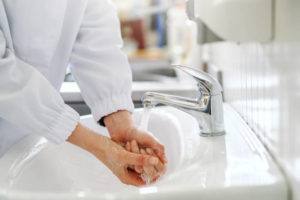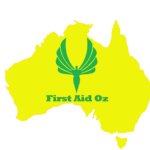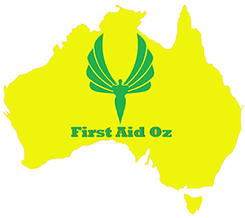Hygiene for First Aid

When preparing to attend to a casualty, hygiene is very important for both the first aider and the casualty. It helps protect both parties from risk of infection through the transmission of biohazards.
Good hygiene includes not only personal cleanliness but also the age-old practice of covering your mouth whenever you cough or sneeze.
Many respiratory infections are spread by droplets that fall to the ground quickly but can infect persons that are nearby. Others cause airborne transmission in which tiny aerosol particles can travel for longer distances to infect others.
Hand-to-face and hand-to-mouth transmission are among the most common ways that infectious diseases are spread. To avoid those, routine handwashing is recommended to limit the exposure of the pathogen to your mouth, eyes, or nose.
Before Treatment
- Always wear gloves if available take care not to touch any unclean object when wearing gloves or once hands are washed.
- Wash hands with soap and water, or rinse with antiseptic.
- Ensure that hands are washed thoroughly between fingers and under nails.
- Use a protective cover over clothing.
- Use safety glasses to protect the eyes.
- Cover any adjacent areas likely to produce infection
- Use a resuscitation mask if needed
During Treatment
- Avoid contact with body fluids.
- Avoid coughing, breathing, sneezing or speaking over the wound.
- Avoid treating more than one casualty without changing gloves between each casualty.
- Use a face shield or mask with a one-way-valve, if available, when doing active resuscitation.
- Wash off any body fluids immediately.
- If you are accidentally cut and there is blood from the casualty near or in your cut, wash the cut immediately with running water, cover the wound and seek medical advice.
- Use only clean bandages and dressings.
After Treatment
- Wash hands and disposes of gloves.
- Clean up both casualty and yourself.
- Wash facemasks and any contaminated equipment in bleach. Soak them in the bleach solution for a minimum of 30 minutes.
- Clean up the immediate vicinity.
- Dispose of dressings, bandages, gloves and soiled clothing correctly by burning.
- Wash hands with soap and water even if gloves were used
- If blood contact is made by a used needle stick:
– Allow the wound to bleed freely
– Wash thoroughly with soap and water
- If blood/body fluids come into contact with your skin:
– Wash thoroughly with soap and running water
- If blood comes into contact with a wound:
– wash with antiseptic, cover and seek medical advice immediately.
- If eyes are contaminated:
– Rinse gently with water, making sure to wash under the eyelids
- If mouth is contaminated:
– Spit out and rinse with cold running water
– Always seek medical advice for further treatment
Infection control when performing CPR
To avoid contact with potentially infectious bodily fluids such as blood or saliva, everyone with training in resuscitation is advised to carry a resuscitation mask in their purse, wallet or first aid kit.
This helps take the worry of infection out of helping someone in a life-threatening situation. These masks are available from first aid providers or from your pharmacy.

First Aid Oz is a trading name of Global Fitness Institute (RTO21793)
